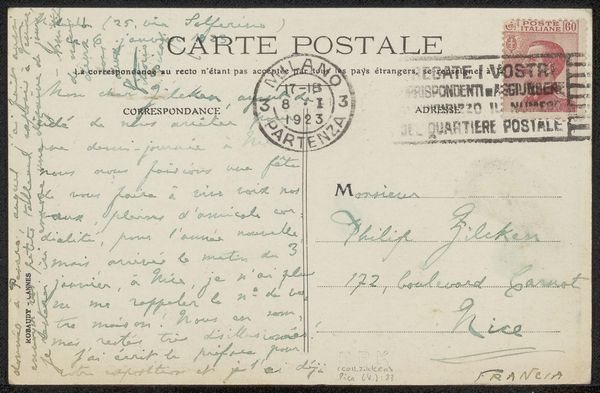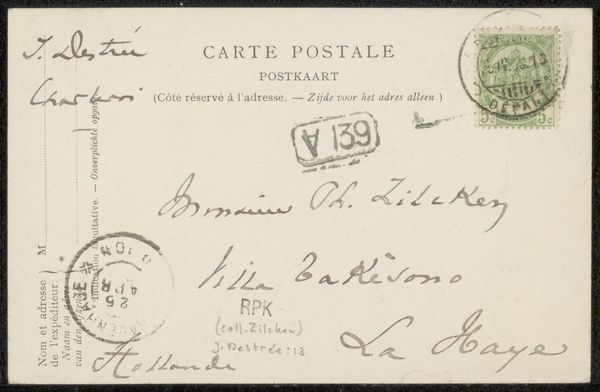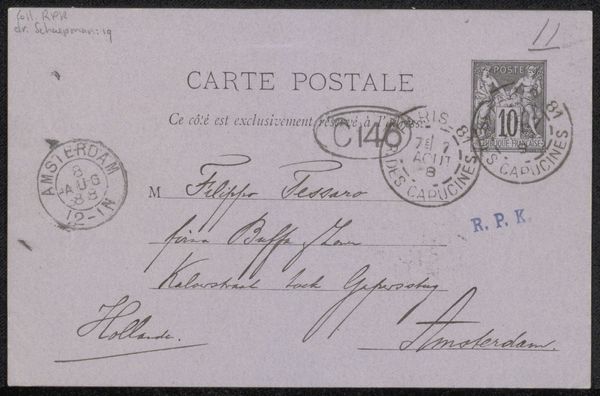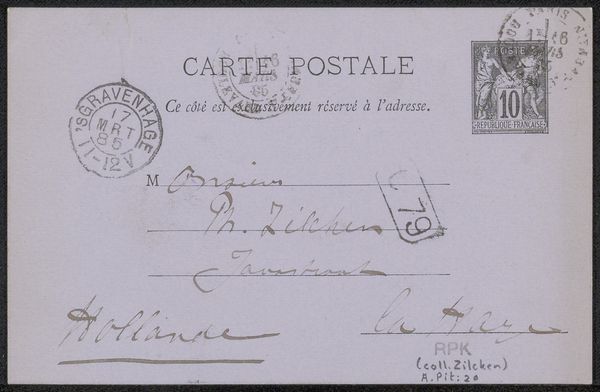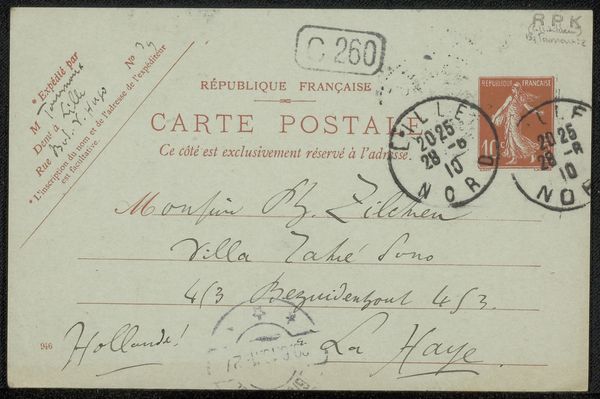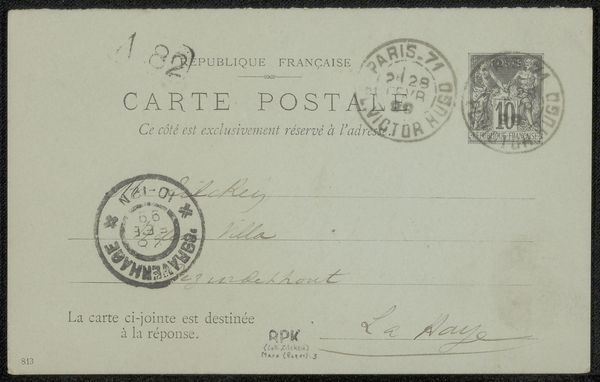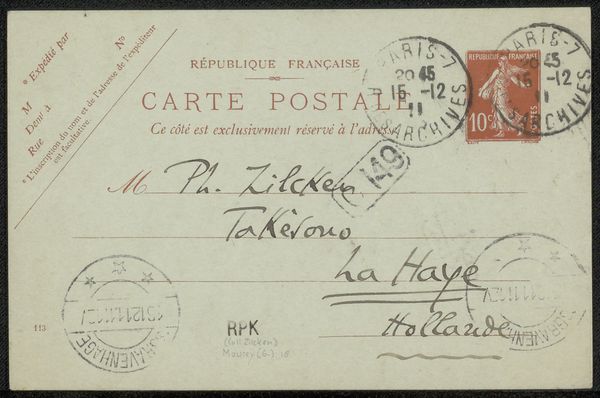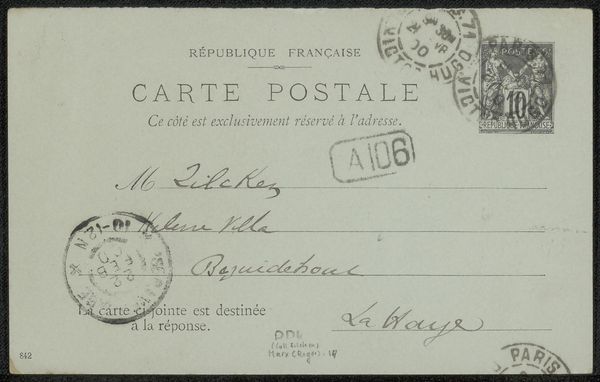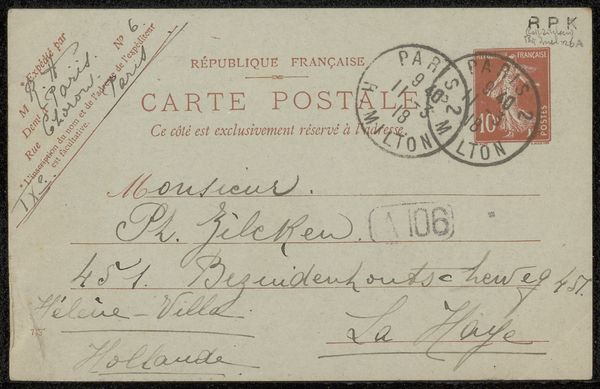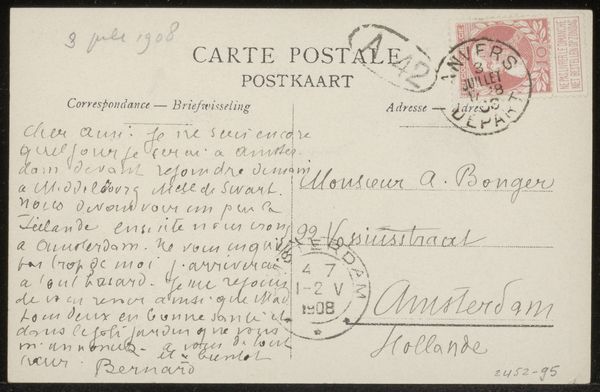
paper, photography, ink
#
paper
#
photography
#
ink
Copyright: Rijks Museum: Open Domain
Editor: Here we have what seems to be an old postcard, titled "Prentbriefkaart aan Philip Zilcken," potentially from between 1910 and 1926. It's made with photography, ink, and paper, according to the museum. The script and aged look definitely make it feel like a relic. What strikes you when you look at this? Curator: Immediately, I am drawn to the dance of signs across its surface. See how the printed text – "Carte Postale" – coexists with the handwritten script? These layers embody cultural memory. The French stamp, with its allegorical figure, suggests ideas of liberty and national identity being transmitted alongside the personal message. Don't you think? Editor: That’s a really interesting perspective. The figure on the stamp definitely represents France, but the average person may only register the monetary value it carries as a symbol. How does that reconcile with its other possible meanings? Curator: Exactly. The figure then is recontextualized within a mundane task and transforms the ritual of correspondence, and in extension, its meaning. It acts as a symbolic bridge between the state and the individual. This particular dance embodies an exchange between Zilcken and the writer. Do you follow me? Editor: I do! So you're saying that something as simple as a postcard can embody layers of cultural and personal significance just through its visual language? Curator: Precisely! Each stamp, each line of handwriting contributes to a larger narrative. Together they create a unique artifact from a particular place in time. And from this artifact, the threads of culture may unravel! Editor: Wow, I'll definitely look at postcards differently from now on. Thanks for pointing all of that out! Curator: My pleasure, noticing these things offers a richer appreciation for seemingly ordinary objects.
Comments
No comments
Be the first to comment and join the conversation on the ultimate creative platform.
